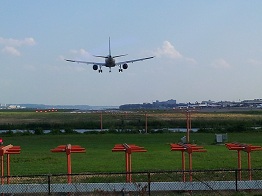 Late into the evening on Feb. 12, 2009, news reports began flooding the airwaves about a plane crash in a small town in New York that killed all 49 on board. An investigation by the National Transportation Safety Board (NTSB) into the Colgan Air Flight 3407 disaster later revealed that pilot fatigue likely played an important role in inhibiting the pilots’ ability to respond to the adverse conditions that night.
Late into the evening on Feb. 12, 2009, news reports began flooding the airwaves about a plane crash in a small town in New York that killed all 49 on board. An investigation by the National Transportation Safety Board (NTSB) into the Colgan Air Flight 3407 disaster later revealed that pilot fatigue likely played an important role in inhibiting the pilots’ ability to respond to the adverse conditions that night.
In the months and years following that fatal crash, TTD actively supported the efforts led by the Air Line Pilots Association (ALPA) to implement rules for airline pilot flight rest requirements that were based on actual scientific and human factor research. FAA rules were finally issued in December 2011, thanks to the dogged focus of Transportation Secretary Ray LaHood, that go a long way toward limiting situations that could lead to chronically fatigued pilots.
This landmark rulemaking brought common sense safety reforms to the daily working lives of pilots and was a victory for passengers and for those of us who care about aviation safety and working conditions.
But there’s one catch: the new rules don’t apply to all pilots.
That’s right, despite flying the same aircraft, in the same airspace, and using the same airports and facilities as their commercial passenger counterparts, cargo pilots were carved out from the new pilot fatigue rules. Imagine driving 55 mph on the highway in the family sedan while a 16-wheeler loaded with freight passes you at 75 because it is exempt from following the same safety rules. Does that pass the reasonable test?
Contrary to what the large cargo carriers and their lobbyists will tell you, cargo pilots suffer from the same fatigue issues as commercial passenger pilots, and often have even more grueling schedules that require them to work through the night, through the next morning and into the afternoon.
Don’t get me wrong — I believe the new FAA standards greatly improve the flight- and duty-time standards for commercial passenger pilots. But cargo pilots, who operate nearly 10 percent of all flights, fall under fatigue rules that were developed before Armstrong and Aldrin set foot on the moon. That’s right, the original pilot rest regulations harken back to the 1960s.
Fortunately, lawmakers are offering a simple, bipartisan solution.
Reps. Michael Grimm (R-NY) and Tim Bishop (D-NY) recently introduced the Safe Skies Act of 2013 (H.R.182), which would require the FAA to modify its pilot fatigue rules to apply to all pilots. Predictably, large cargo carriers and the airline lobby (A4A) have already spoken out opposing this common sense solution, and are spreading their old and tired “voodoo science” arguments in Washington to hold on to a carve out that puts profits ahead of safety.
It is time for lawmakers in Washington and the Administration to follow the lead of Reps. Grimm and Bishop and put the lives and safety of our pilots, and the overall safety of our aviation system, ahead of corporate profits. For too long cargo carriers have used their lobbying might to win exemptions from important safety and security rules. The industry’s insistence that it be excluded from regulations governing the safe transport of lithium batteries, for example, comes to mind. Heavy-handed lobbying by special interests shouldn’t leave cargo pilots – and the passenger air carriers with which they share our airspace – exposed to the lethal effects of exhaustion on the job.
We need to put an end to two levels of safety. And we can start by passing the Safe Skies Act.